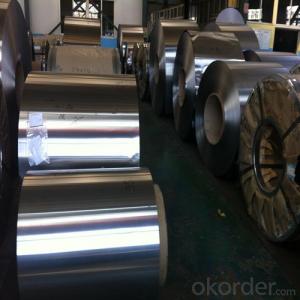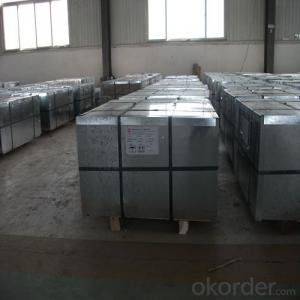Electrolytic Tinplate of High Quality for Metal Container 0.23mm
- Loading Port:
- Shanghai
- Payment Terms:
- TT OR LC
- Min Order Qty:
- 25 m.t.
- Supply Capability:
- 15000 m.t./month
OKorder Service Pledge
OKorder Financial Service
You Might Also Like
1.Structure of Electrolytic Tinplate of High Quality for Metal Container 0.23mm Description
Electrolytic Tinplate is a thin steel sheet coated by tin. It has an extremely beautiful metallic luster as well as excellent properties in corrosion resistance, solder ability, and weld ability.
2.Main Features of the Electrolytic Tinplate of High Quality for Metal Container 0.23mm
Electrolytic Tinplate undoubtedly enjoys the pride of place as a packaging medium especially for food. It owes its unique position to its "nine layer sandwich structure", each of which contributes to its eminence as a packing material. The steel base of electrolytic tinplate provides the necessary strength and formability for can fabrication. The tin-iron alloy layer provides the bond between the steel and free tin layer. The free tin layer is not only responsible for the attractive bright finish and ease of solderability but is also non-toxic- a factor of vital importance in food packaging!
Tinplate is also widely used for making all types of containers such as food cans, beverage cans, and artistic cans, tea cans, painting cans, chemical package cans and dry food package cans, metal printing etc. Its applications are not limited to containers; recently, electrolytic tinplate has also been used for making electrical machinery parts and many other products.
3.Electrolytic Tinplate of High Quality for Metal Container 0.23mm Images
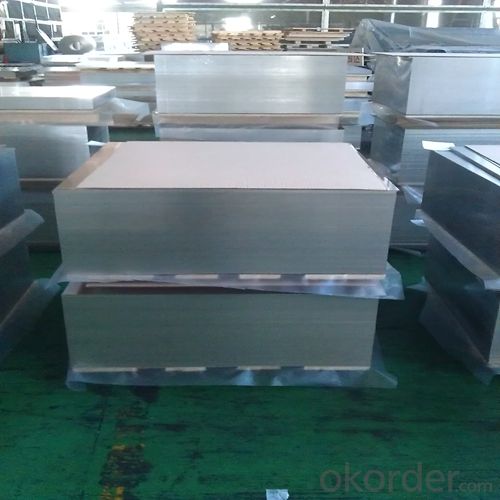
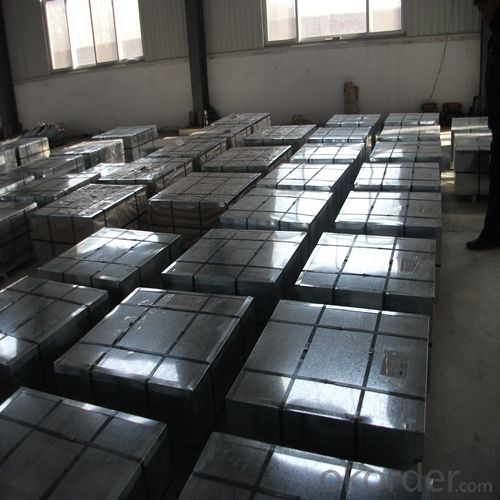
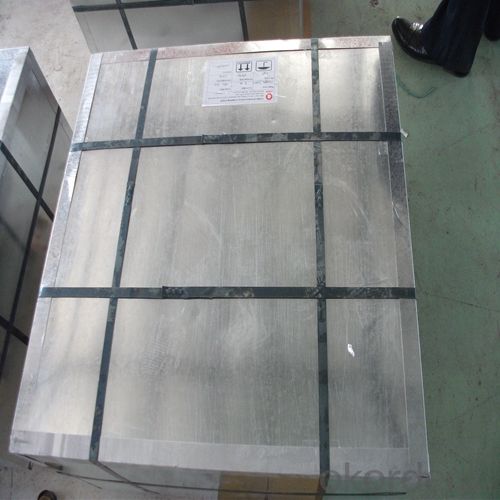
4.Electrolytic Tinplate of High Quality for Metal Container 0.23mm Specification
Standard:BS EN 10202
Material: SPCC
Thickness:0.23mm
Width:732mm
Temper: T4
Annealing: CA
Coil Inner Diameter: 508mm
Weight: 6-10 tons/coil
Passivation:311
Oil: DOS
Surface: silver
5.FAQ of Electrolytic Tinplate of High Quality for Metal Container 0.23mm:
1. What is the delivery time for your prime quality tinplate?
Usually 35 days after order confirmation.
2. What is your Minimum Order Quantity?
Usually MOQ is 50tons for one single size, for trial order, it can be 25 tons.
3. What is the payment term?
The most common we use is L/C at sight or TT. We can also try use other terms.
- Q:How is tinplate protected during transportation and storage?
- Tinplate is typically protected during transportation and storage through various measures such as applying a protective coating, using appropriate packaging materials, and implementing suitable handling and stacking procedures. The protective coating, often a thin layer of oil or lacquer, helps to prevent corrosion and maintain the integrity of the tinplate. Additionally, packaging materials like plastic wraps, paper interleaves, or cardboard dividers are used to separate and cushion the tinplate sheets, preventing scratches, dents, or other damages. Proper handling techniques, including careful loading and unloading, as well as appropriate stacking methods, ensure that the tinplate remains stable and secure during transportation and storage, reducing the likelihood of any physical harm.
- Q:Can tinplate be used for aerosol packaging?
- Yes, tinplate can be used for aerosol packaging. Tinplate is a common material choice for aerosol cans due to its strength, durability, and resistance to corrosion. It provides a protective barrier against moisture and oxygen, ensuring the integrity of the aerosol product. Additionally, tinplate can be easily formed into various shapes and sizes required for aerosol packaging.
- Q:What are the main applications of tinplate in the pet food industry?
- Tinplate is commonly used in the pet food industry for packaging purposes. It offers excellent protection against oxygen, light, and moisture, which helps to maintain the freshness and quality of pet food. Additionally, tinplate cans are easy to open and reseal, making them convenient for pet owners. The material is also recyclable, making it an environmentally friendly choice for packaging.
- Q:What are the different ways to open tinplate containers?
- There are several ways to open tinplate containers, including using a can opener, a pair of scissors, a knife, or pulling the tab if it is a pop-top can.
- Q:How does tinplate packaging contribute to product protection against oxidation?
- Tinplate packaging provides a protective barrier against oxidation due to its inherent properties. The tin coating on the steel surface acts as a barrier, preventing oxygen from coming into direct contact with the product inside the packaging. This barrier effectively slows down or prevents the oxidation process, preserving the quality and shelf-life of the product. Additionally, tinplate packaging is resistant to corrosion, ensuring the integrity of the package and further safeguarding against oxidation.
- Q:What are the main challenges in tinplate supply chain management?
- The main challenges in tinplate supply chain management include ensuring a steady and reliable supply of tinplate, managing fluctuations in demand and supply, coordinating multiple stakeholders in the supply chain, optimizing transportation and logistics, ensuring product quality and compliance with regulations, and mitigating risks such as price volatility and disruptions in the supply chain.
- Q:How is tinplate stored and transported?
- Tinplate is typically stored and transported in rolls or sheets. It is commonly packaged in coils and secured with strapping or wrapping to prevent damage during transportation. These coils or sheets are then loaded onto trucks, ships, or trains for distribution to manufacturers and consumers. Additionally, proper handling and storage conditions are crucial to maintain the quality of tinplate, such as protecting it from moisture, extreme temperatures, and physical impact.
- Q:What are the limitations of using tinplate?
- There are several limitations to using tinplate. Firstly, it is relatively expensive compared to other packaging materials such as aluminum or plastic. Secondly, tinplate is not as lightweight as some alternative materials, which can add to transportation costs and increase carbon footprint. Additionally, tinplate is susceptible to corrosion and can rust if not properly coated or maintained. Lastly, its use is limited to certain applications, and it may not be suitable for products that require high heat or pressure resistance.
- Q:How does tinplate compare to plastic packaging in terms of sustainability?
- Tinplate generally has better sustainability credentials compared to plastic packaging. Tinplate is made from steel, which is a highly recyclable material, whereas plastic is derived from fossil fuels and has limited recycling capabilities. Tinplate can be recycled indefinitely without losing its qualities, while plastic recycling can be challenging due to different types of plastics and contamination issues. Additionally, tinplate packaging has a longer lifespan and offers better protection for products, reducing the need for excessive packaging. However, it is important to consider the overall life cycle impact, as both materials have environmental implications during production and transportation.
- Q:What are the main applications of tinplate in the beverage industry?
- Tinplate is widely used in the beverage industry for packaging purposes. It is primarily utilized for manufacturing cans and lids, ensuring the preservation and freshness of various beverages such as carbonated drinks, beer, fruit juices, and canned foods. Tinplate's ability to provide a protective barrier against moisture, light, and air, along with its exceptional resistance to corrosion, makes it an ideal choice for maintaining the quality and shelf life of beverages. Additionally, tinplate cans are lightweight, easy to stack and transport, and can be printed with attractive designs, making them popular for marketing and branding purposes in the beverage industry.
1. Manufacturer Overview |
|
|---|---|
| Location | |
| Year Established | |
| Annual Output Value | |
| Main Markets | |
| Company Certifications | |
2. Manufacturer Certificates |
|
|---|---|
| a) Certification Name | |
| Range | |
| Reference | |
| Validity Period | |
3. Manufacturer Capability |
|
|---|---|
| a)Trade Capacity | |
| Nearest Port | |
| Export Percentage | |
| No.of Employees in Trade Department | |
| Language Spoken: | |
| b)Factory Information | |
| Factory Size: | |
| No. of Production Lines | |
| Contract Manufacturing | |
| Product Price Range | |
Send your message to us
Electrolytic Tinplate of High Quality for Metal Container 0.23mm
- Loading Port:
- Shanghai
- Payment Terms:
- TT OR LC
- Min Order Qty:
- 25 m.t.
- Supply Capability:
- 15000 m.t./month
OKorder Service Pledge
OKorder Financial Service
Similar products
New products
Hot products
Hot Searches
Related keywords
